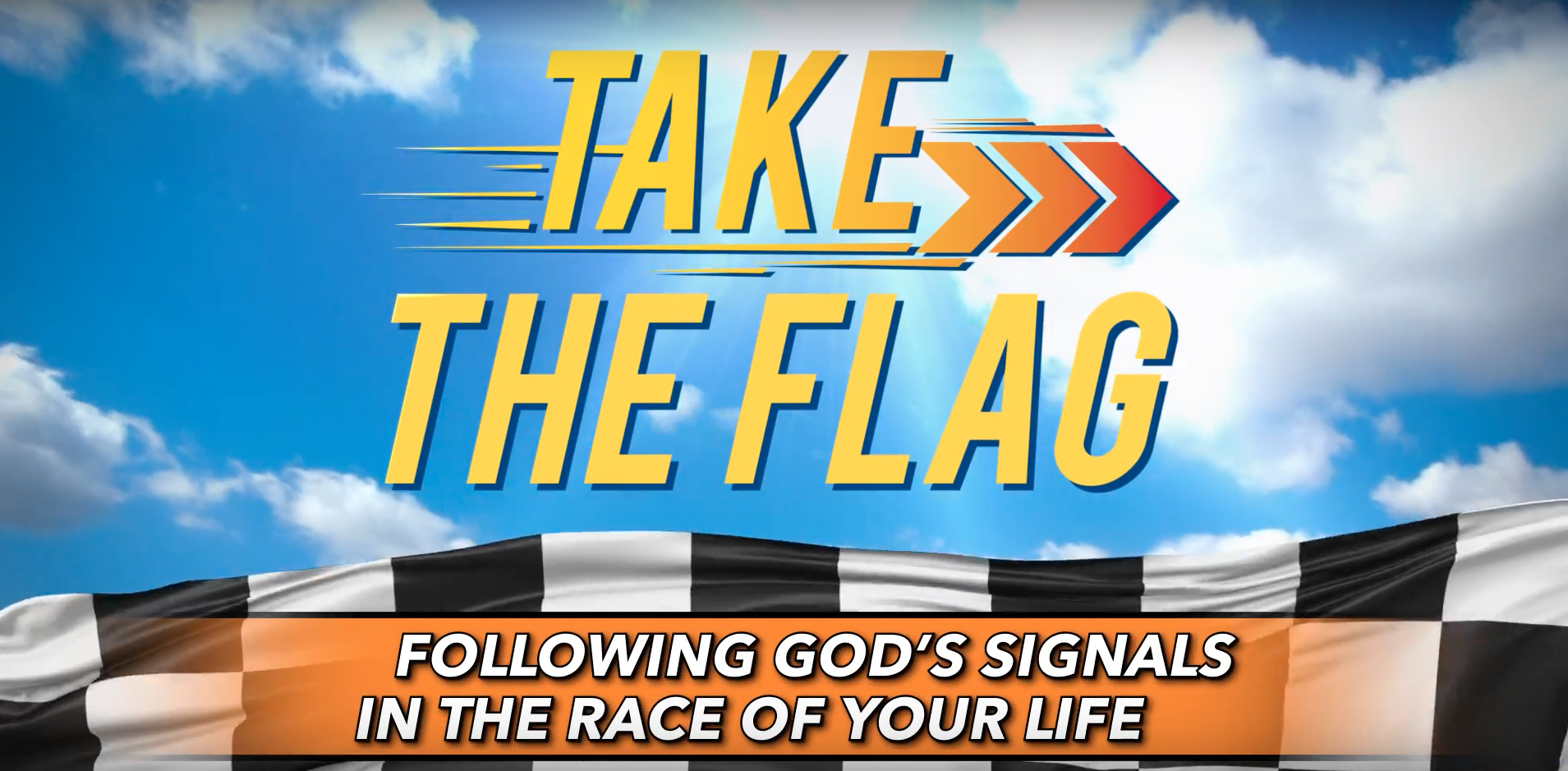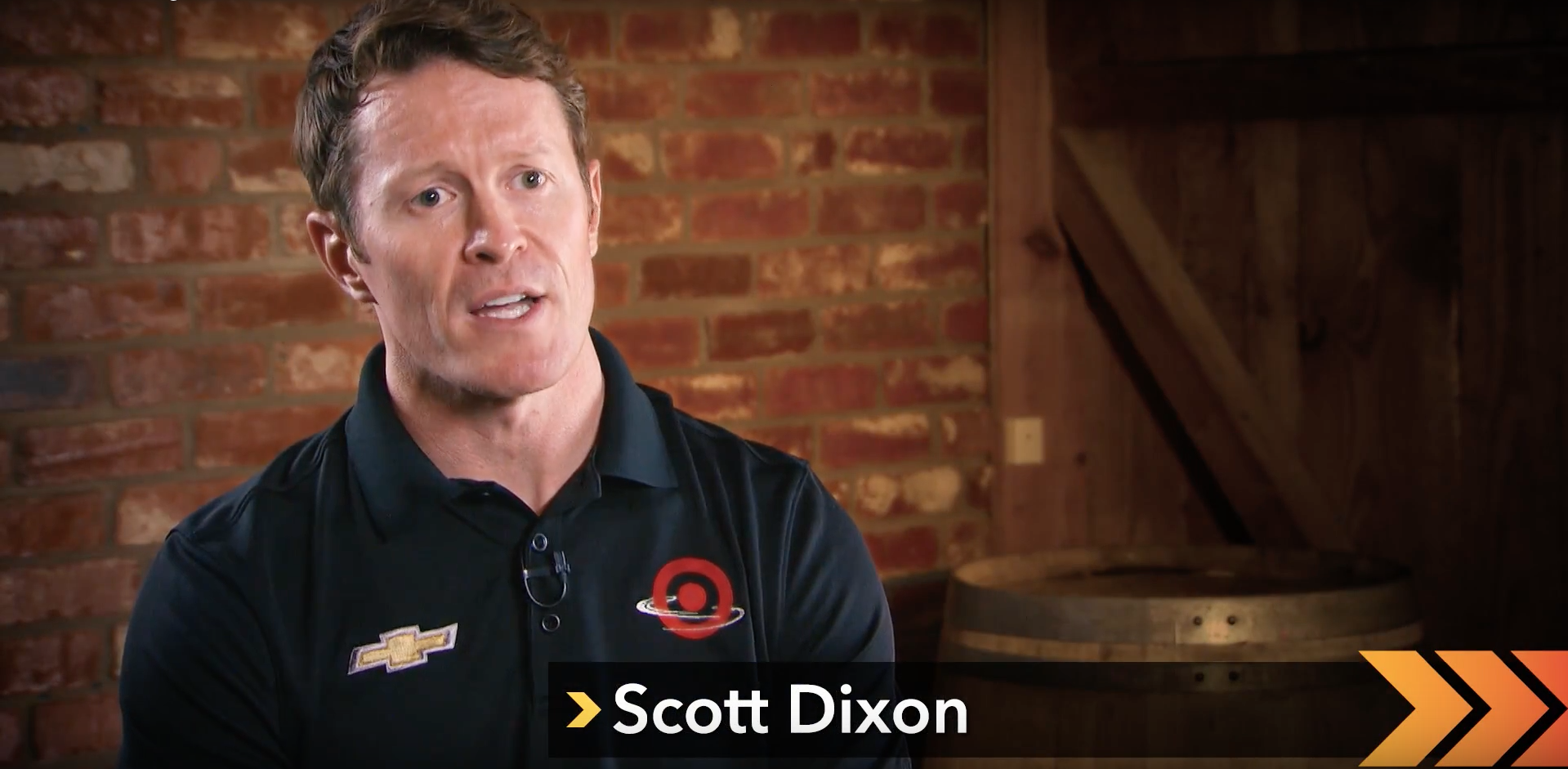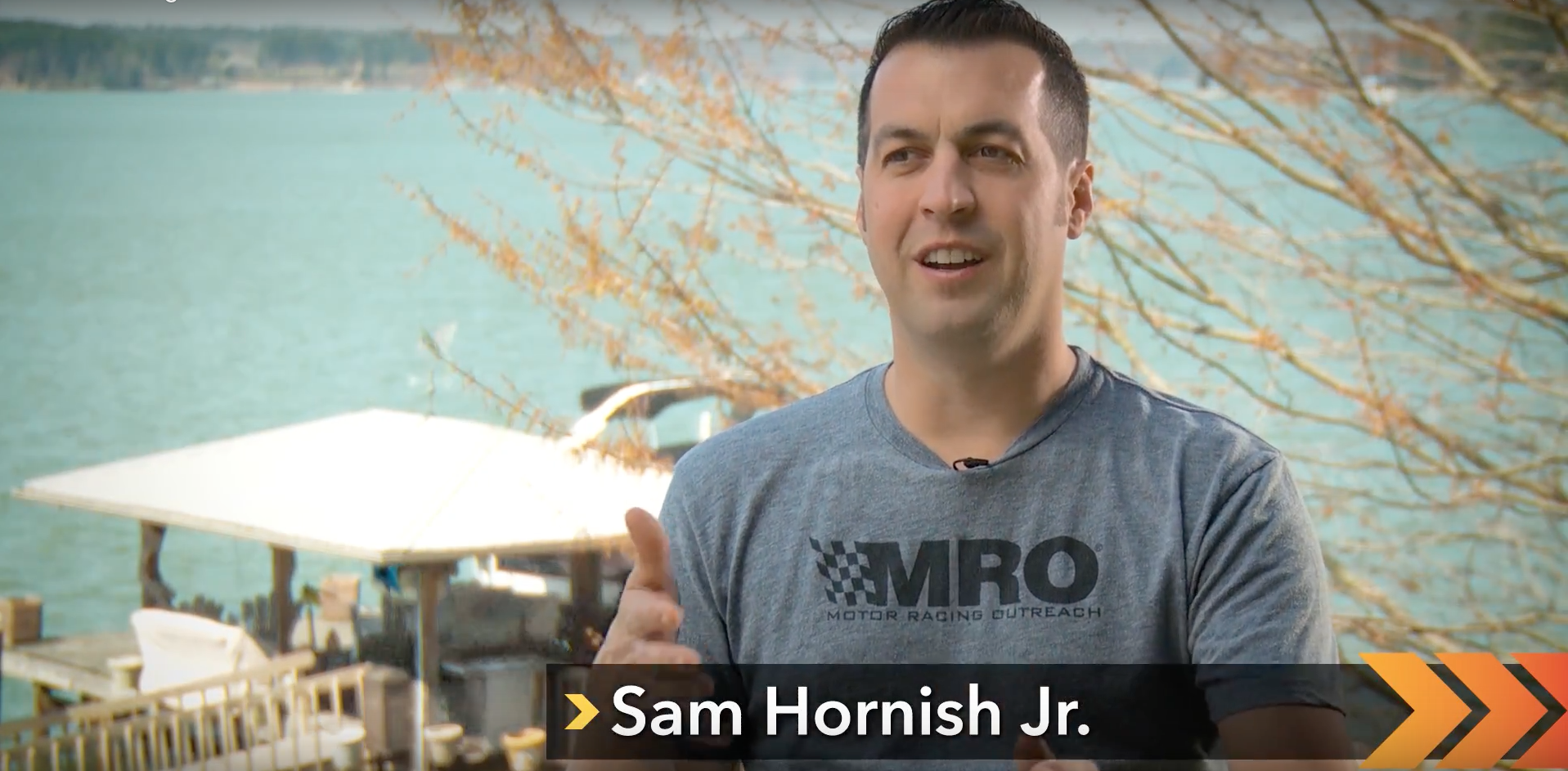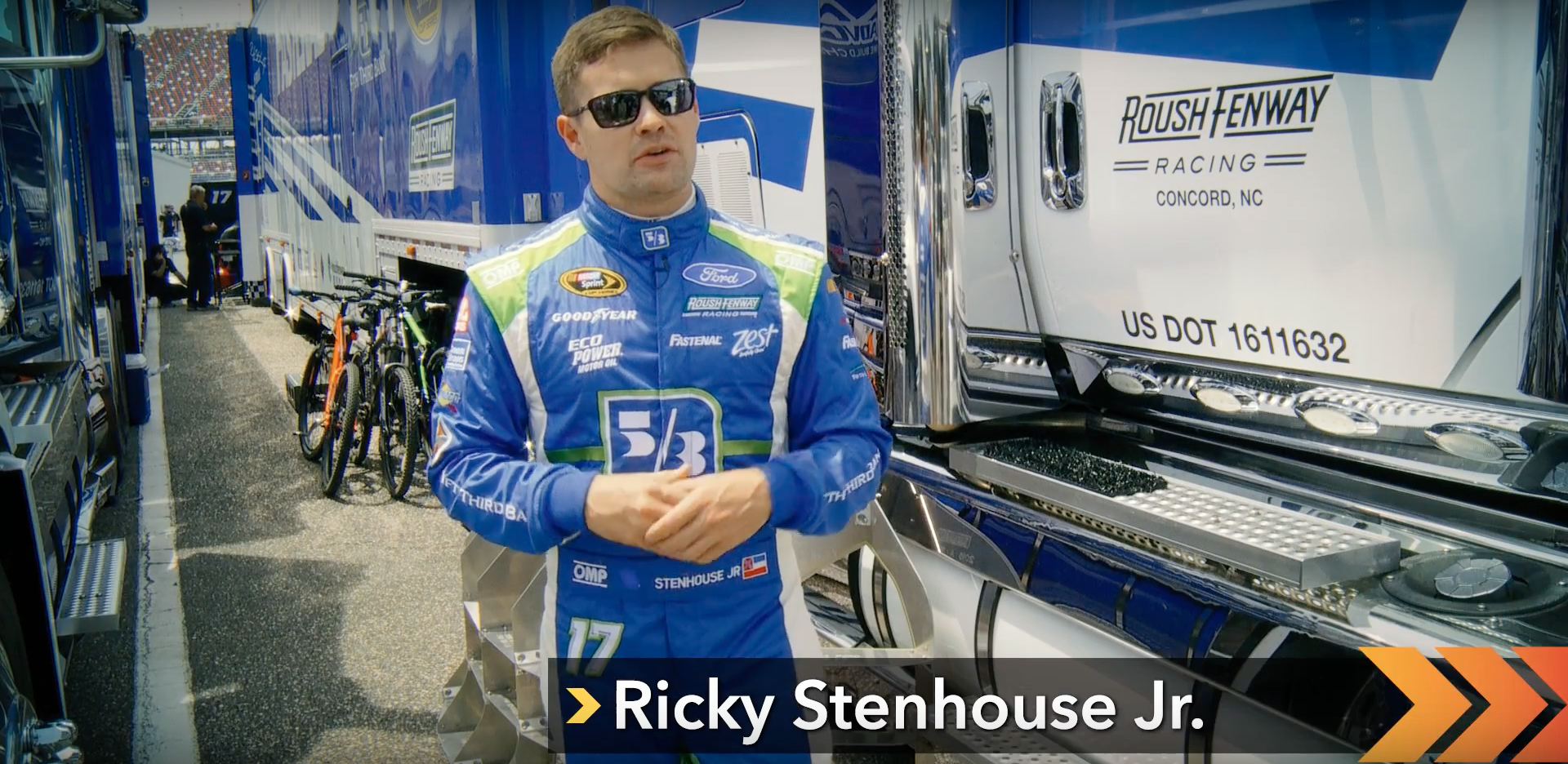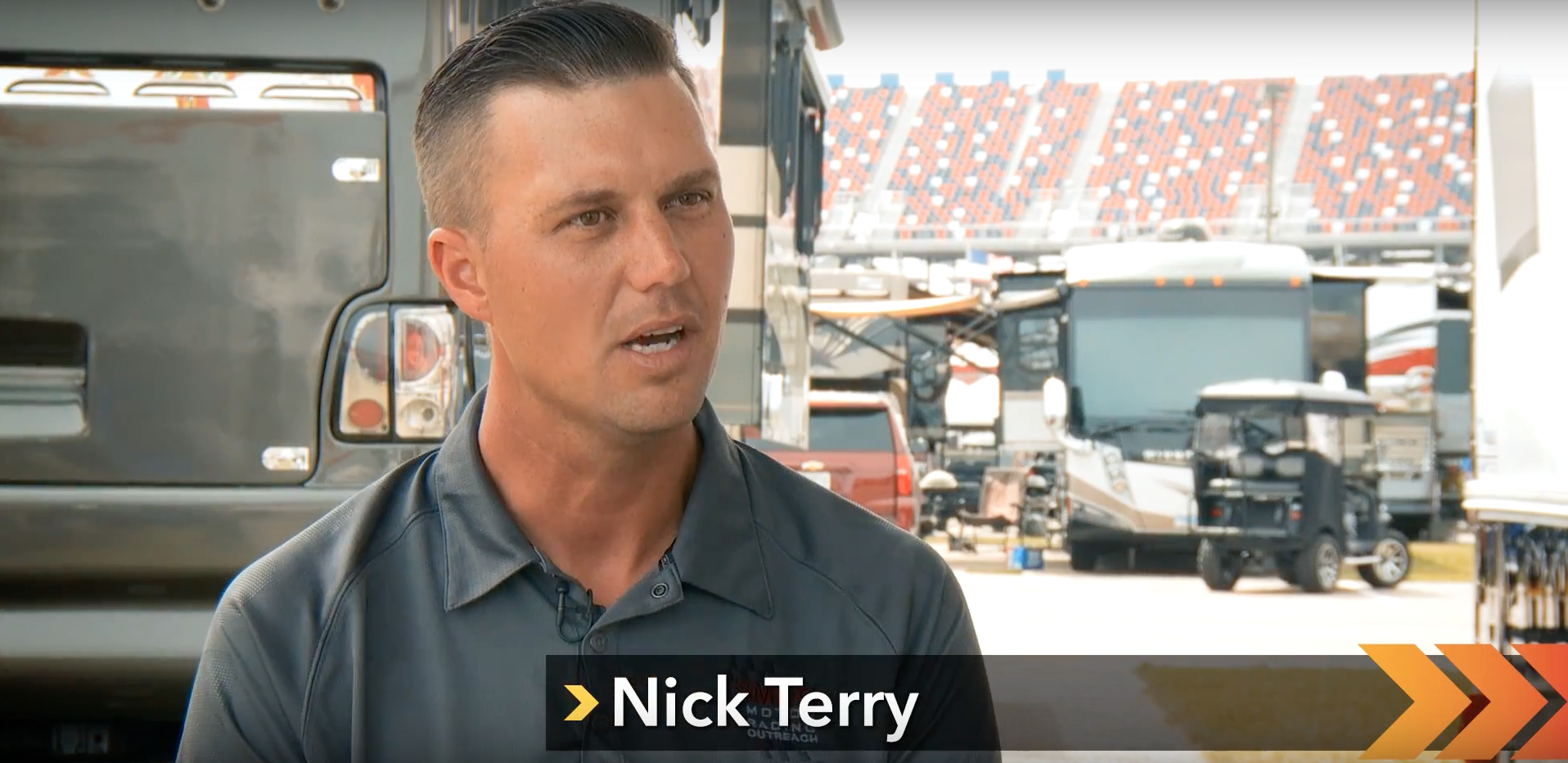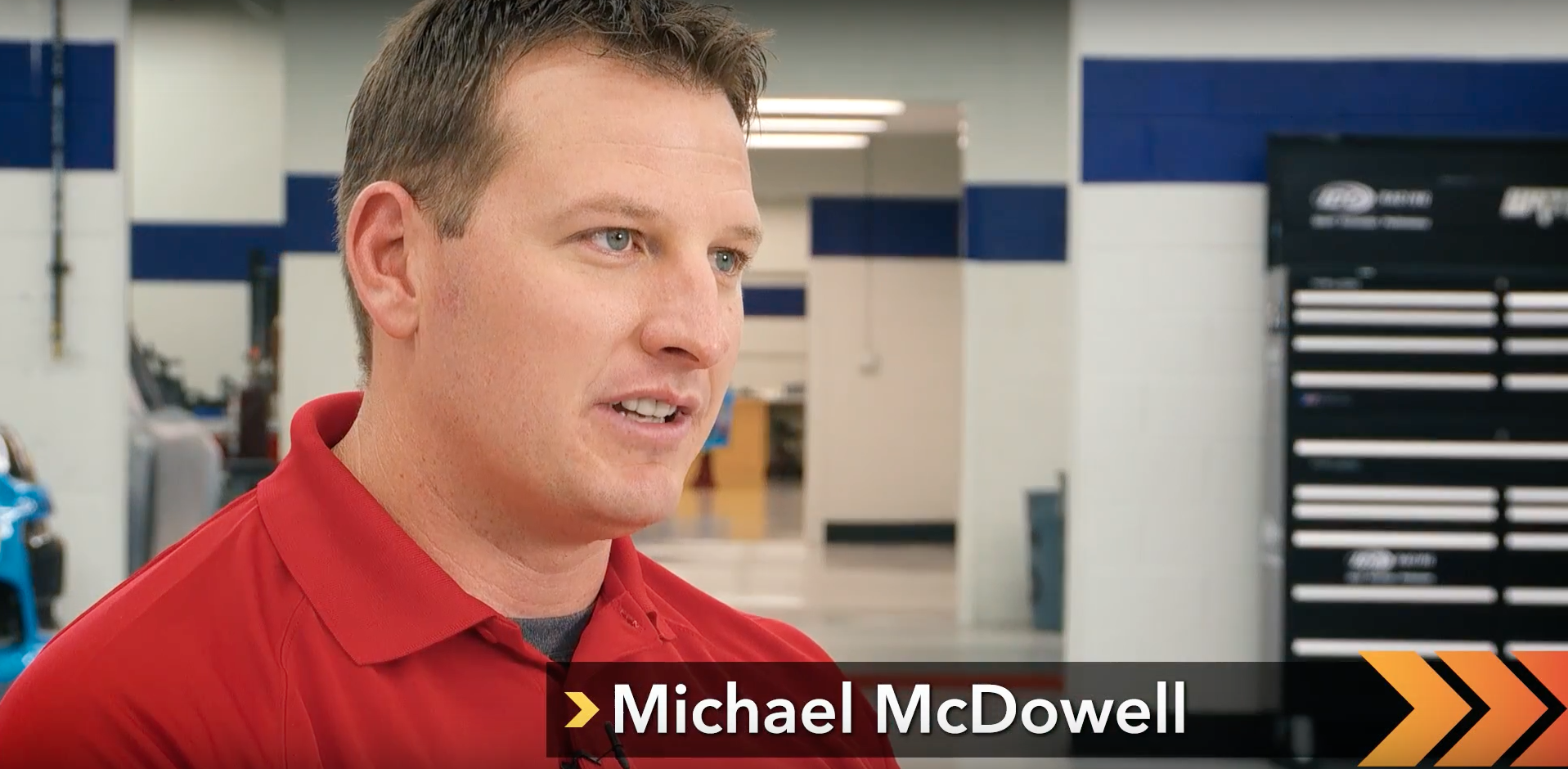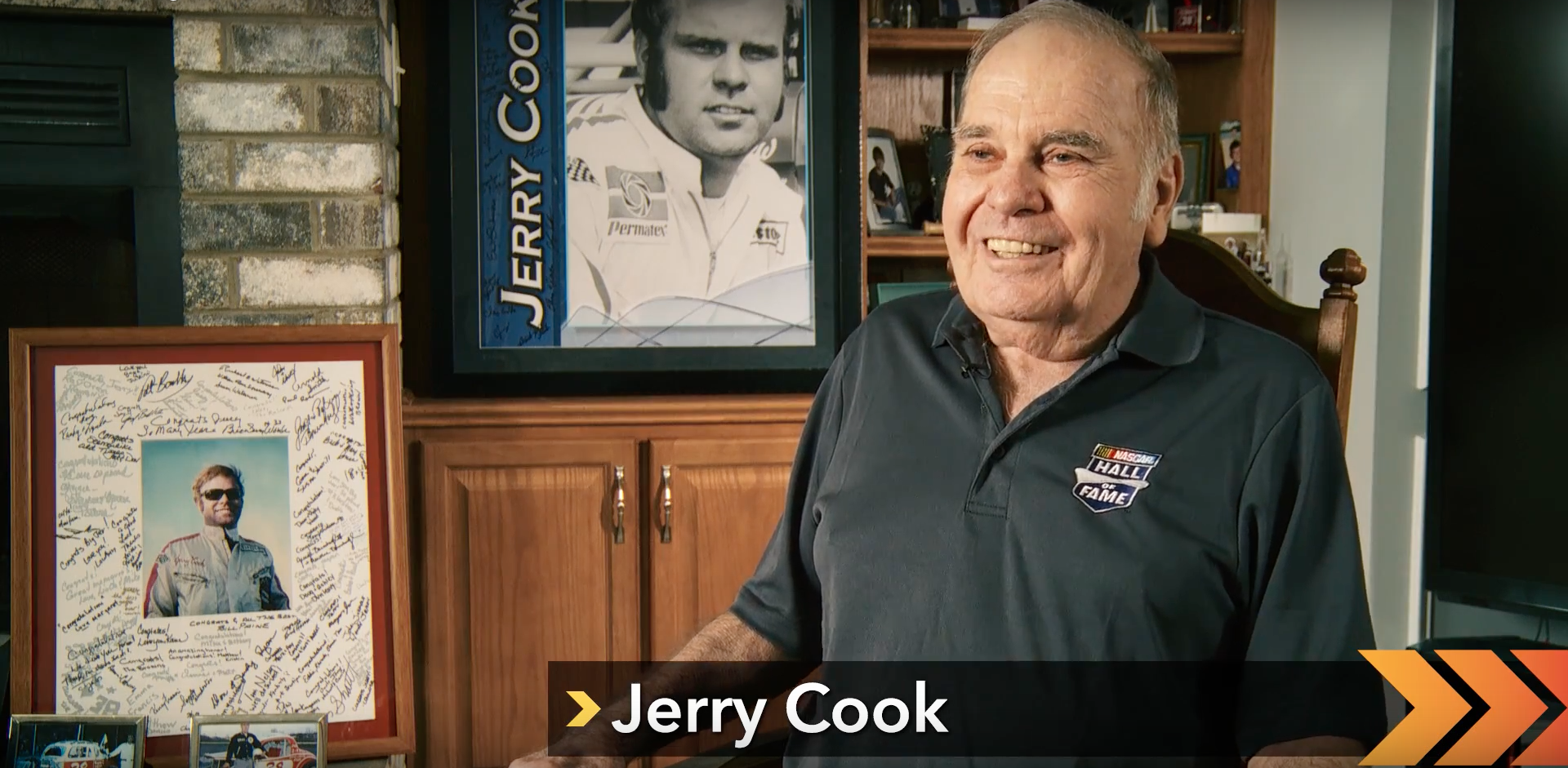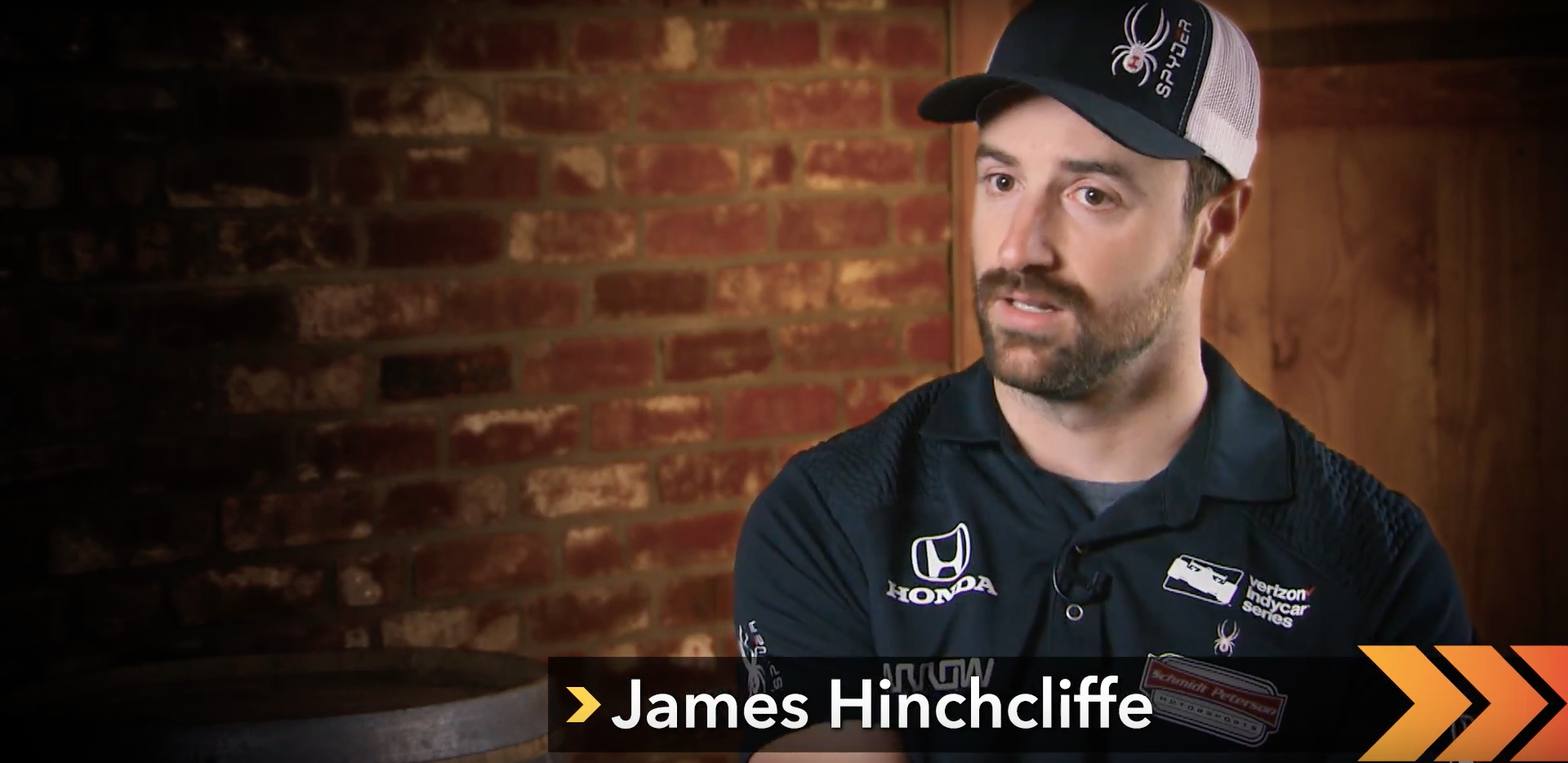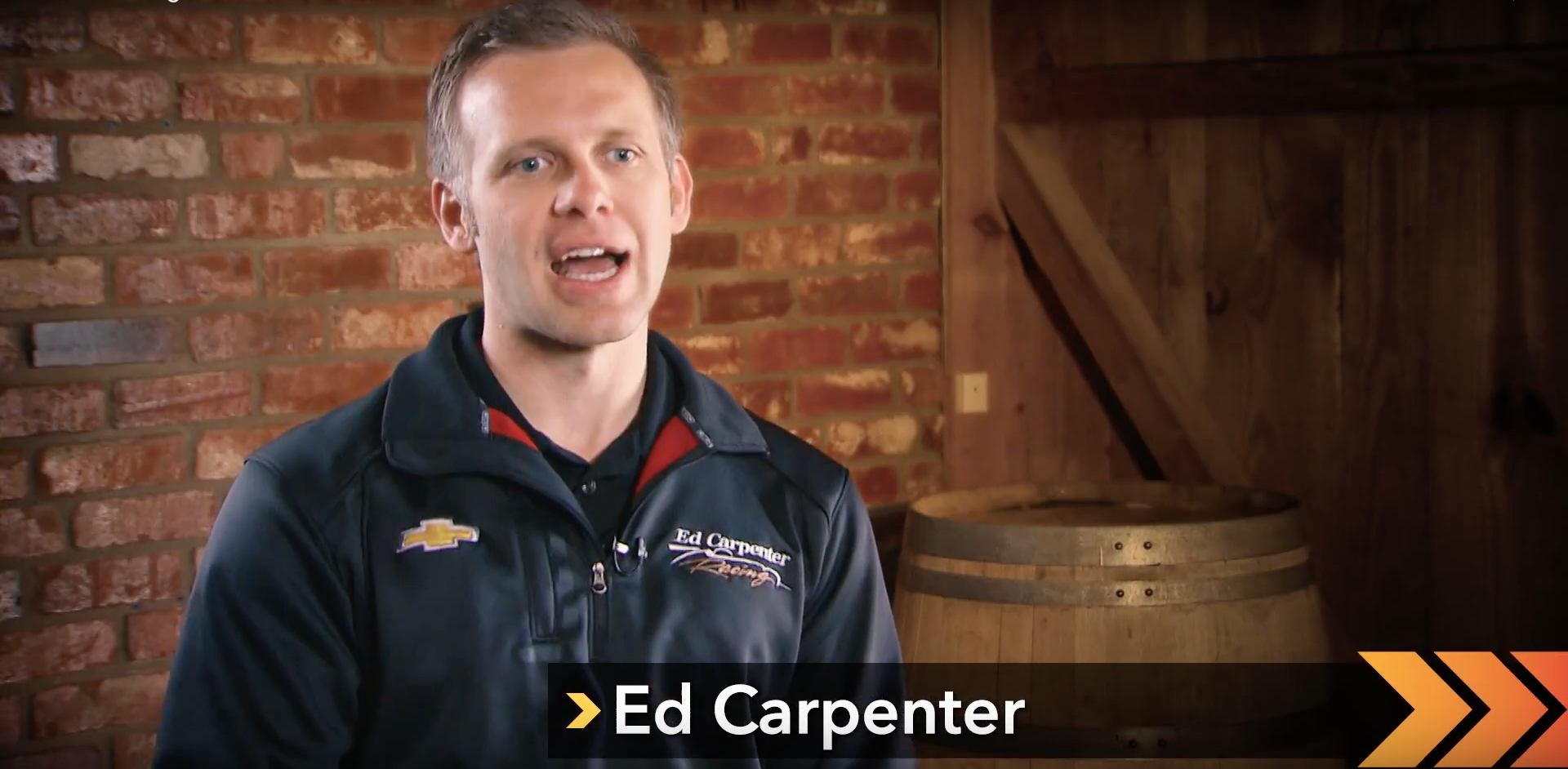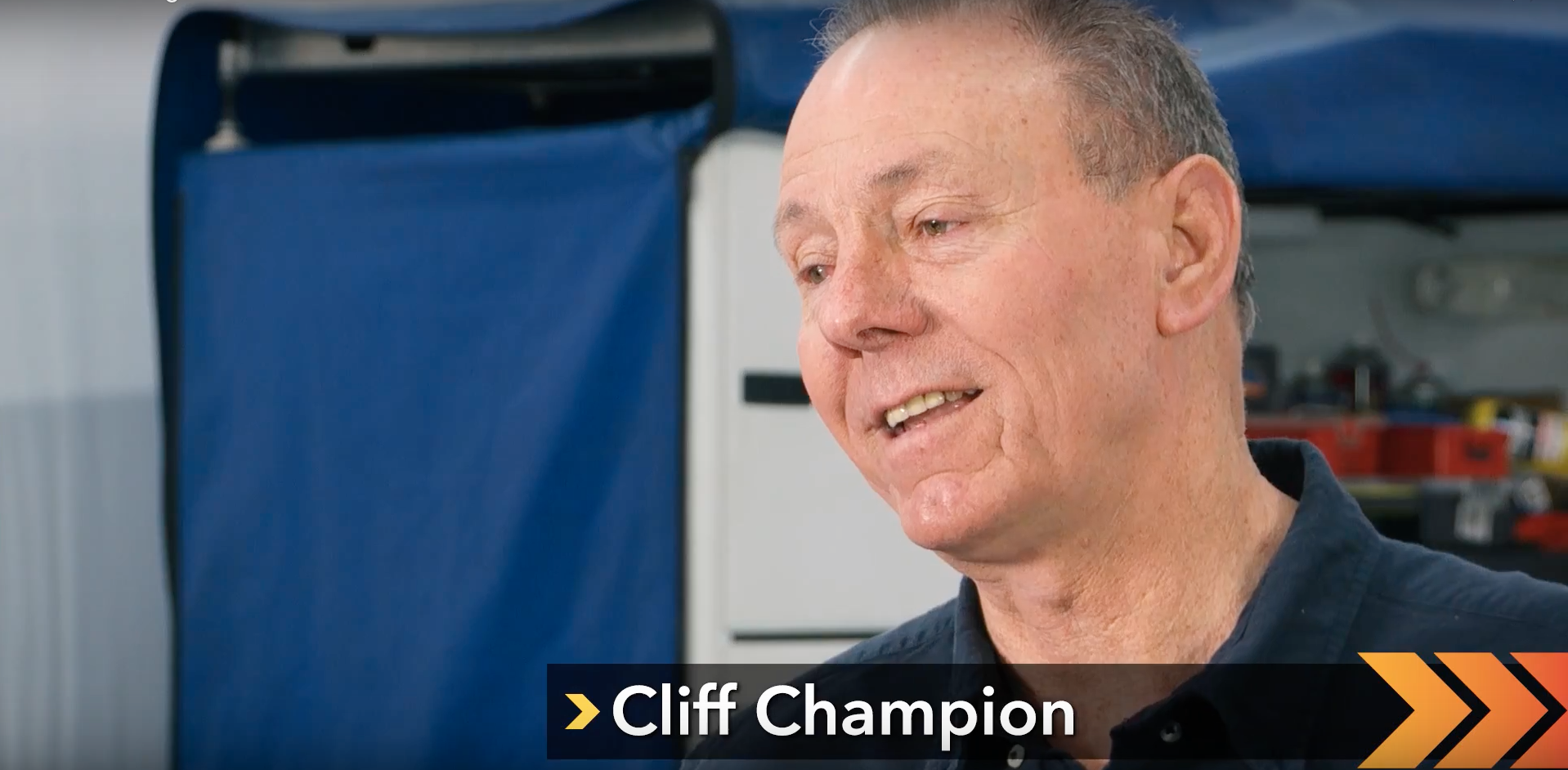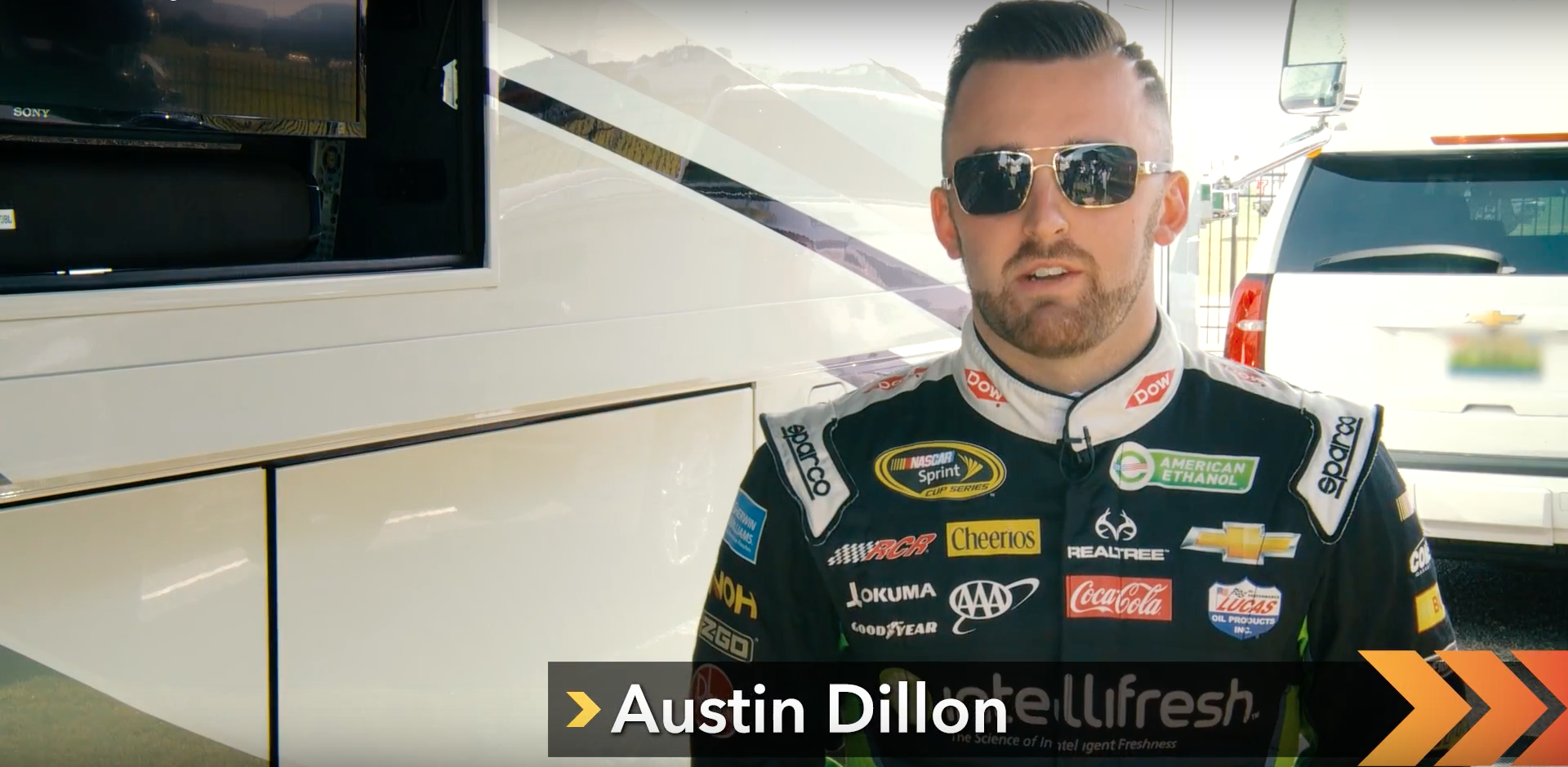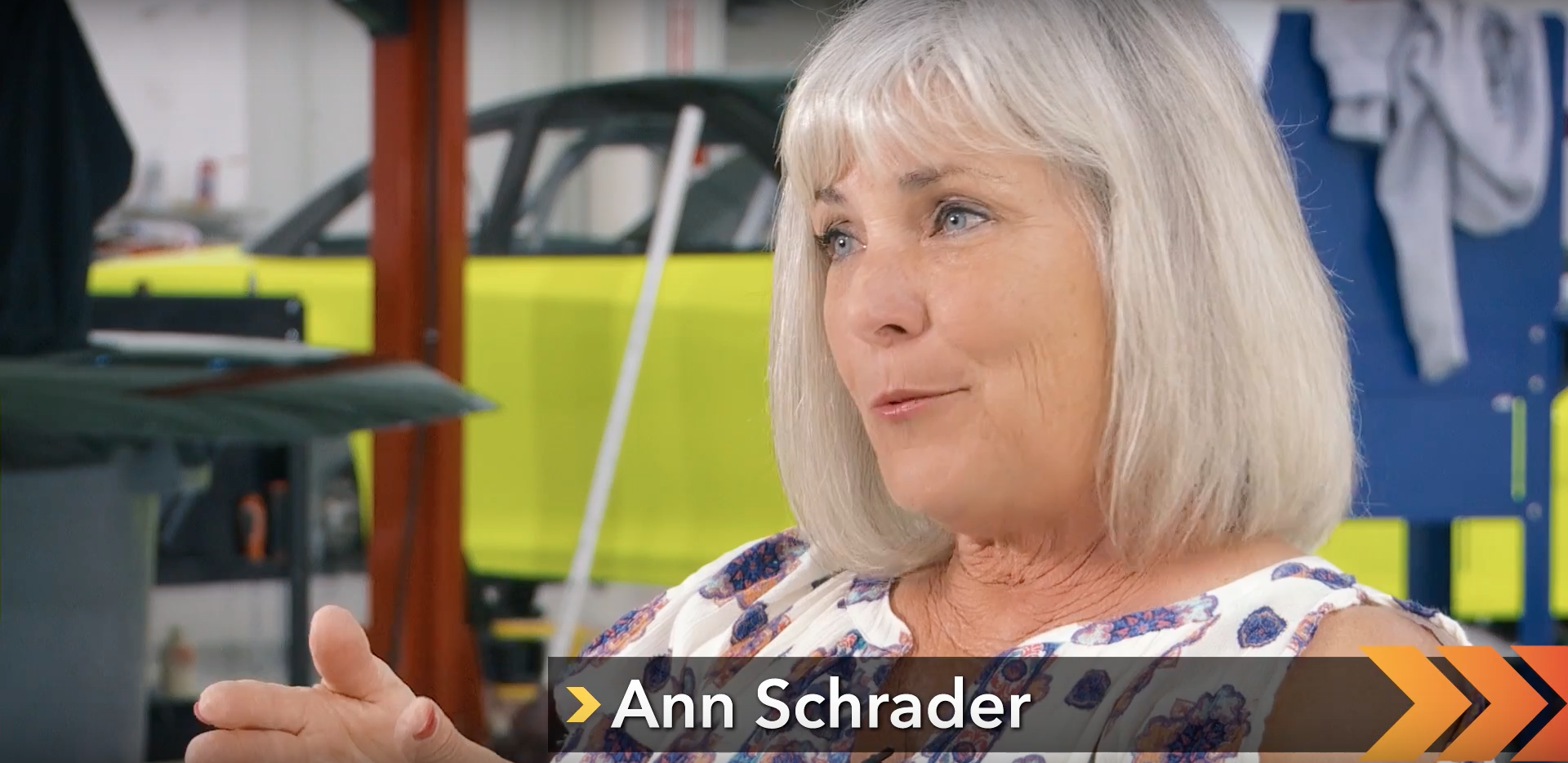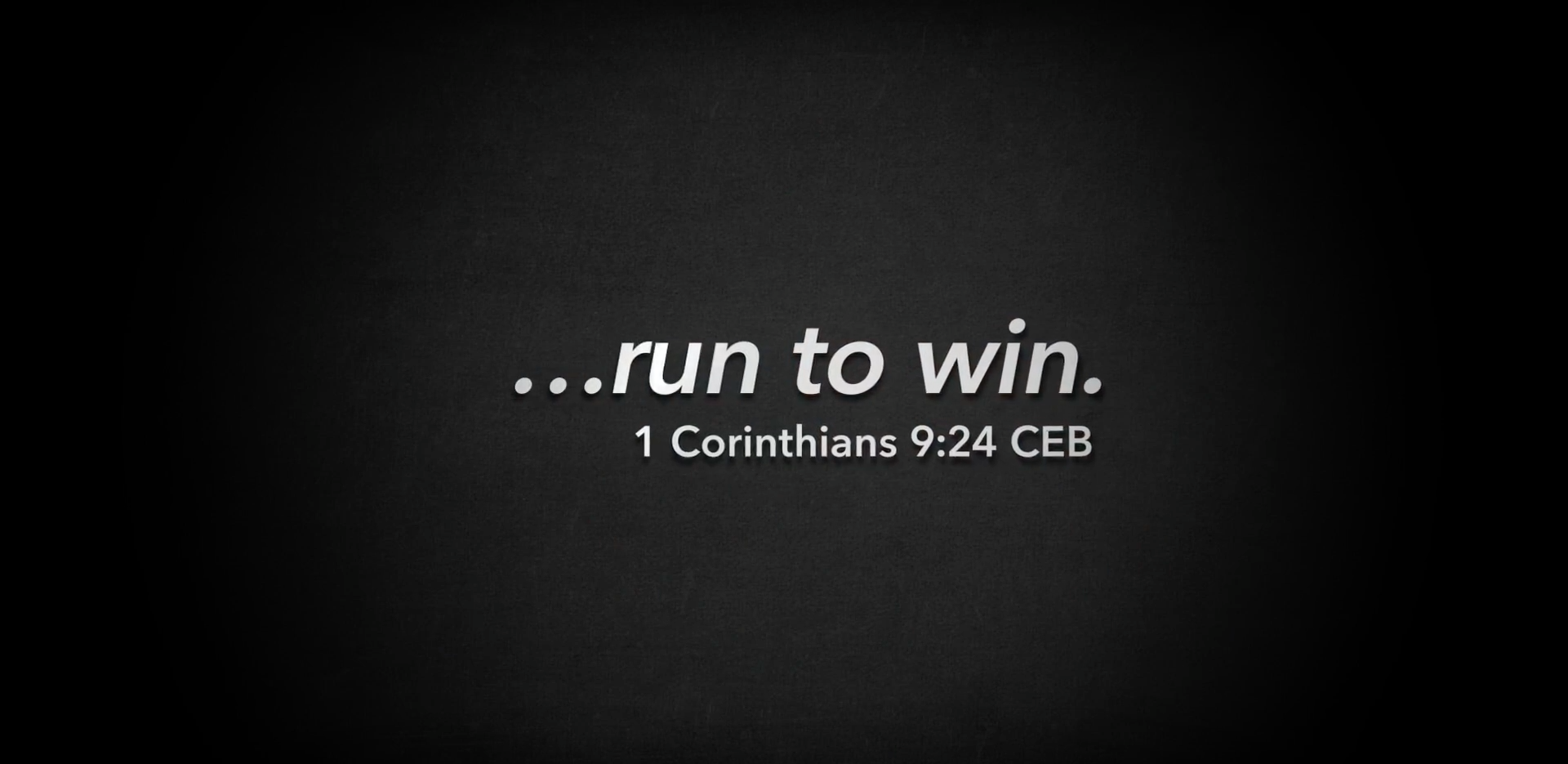Praise for Take the Flag
“Take the Flag will keep you on the right track toward Jesus no matter here you are in the race of life. As a NASCAR chaplain, I see the flags wave over the passing race cars on the track every week. Rob connects this theme with biblical teaching in a way that has challenged me in my walk with the Lord. This series will encourage you to keep following Jesus, full speed ahead, all the way to the finish line.”
-Nick Terry, Chaplain, Motor Racing Outreach
About the Book
How long are the sessions in each of the series?
We created the age-level guides for 45-minute sessions and included additional material for midweek groups that meet for 60-90 minutes. You can tailor the content to fit your setting. The video sessions for this study are as follows:
- Session 1: “The Green Flag” — 10:17
- Session 2: “The Yellow Flag” — 15:03
- Session 3: “The Blue Flag” — 10:52
- Session 4: “The Red Flag” — 10:43
- Session 5: “The Black Flag” — 14:33
- Session 6: “The White Flag” — 12:14
- Session 7: “The Checkered Flag” — 12:15
We’ve never offered small groups before. Is there more help online?
Everything you need is included in the Age-level group guides! For youth and adult leaders, we suggest you read the articles “Starting and Facilitating small groups.” If you’re still a little nervous, sign up for the online eCourse as a group through Upper Room eLearning. If you haven’t taken an eCourse we make it easy for you and your group to learn together!
What do you have for children?
You’ll notice on the CONTENT FOR LEADERS tab a drop-down for Age-level guides. On that page you’ll find the Children’s Group Guide, download the pdf for your children’s facilitators, it contains additional content for planning their sessions.
OK, so what about youth?
Glad you asked! The Youth Group Guide is also on the Age-level guides drop-down, along with the Adult Group Guide. You’ll also find two helpful articles on Starting and Facilitating small groups from our friends at devozine!
How do we prepare facilitators to lead this study?
Everything you need is included in the Age-level group guides posted under the CONTENT FOR LEADERS tab on this website. We suggest you spend some time going through the guide with your facilitators before your groups begin.
What if I Have More Questions?
Contact customer assistance 800.972.0433
Praise for Take the Flag
“Rob Fuquay’s inspiring book Take the Flag is a creative, innovative challenge to us to respond productively to God’s basic signals in the race of life. Like the apostle Paul before him, Rob is familiar with the racing world and its crucial, lifesaving flag signals to its drivers–and sees in them (and in the sport of racing, like Paul) fascinating lessons for living life meaningfully in a world that often moves at breakneck speed.”
-James W. Moore, retired United Methodist pastor
Bestselling author of over 40 books, including Yes, Lord, I Have Sinned, but I Have Several Excellent Excuses
Sermon Starters
Before you begin planning worship, we suggest you read the corresponding book chapter, watch the DVD segment, and review the Adult Group Guide then with your team begin with the Sermon Starters!
The flow of the DVD is:
- Rob introduces the flag for the session and its meaning.
- 3—4 drivers or auto racing professionals share briefly their experiences with the flag
- Rob segues into a longer testimony on how the flag applies to our Christian walk.
- 7 drivers or auto racing professionals share lessons from the flag in their lives.
- Rob wraps up and leaves your group with some thoughts or a question to discuss more.
Instructions for your preparation:
- Read the chapter in the book and review the reflection questions at the end of the chapter.
- Watch the DVD segment for the session—listen for key phrases or words.
- Review the Adult Group Guide for the session.
- New to auto racing? Here’s a quick flag overview with Larry McReyonlds.
Consider asking your worship team or adult class leaders to meet to discuss the book and DVD so you can get their perspectives. Some of the flags and testimonies may be easier to resonate with than others. Hearing other perspectives will make the series richer for everyone.
In auto racing, the driver is the front person and is the person who gets a lot of attention, but the driver does not race alone. The crew chief, crew, and spotter are important people who we don’t always see or know. Everyone on the team plays an important role and function; without each person’s gifts and talents the driver could not do his or her job. The body of Christ imagery found in 1 Cor. 12:14-40 is a biblical way of thinking about this.
There are many auto racing fans (one statistic we found was 1:5 people), so you will have people in your congregation who are fans. The emphasis in this churchwide series is on the flags, but you might find these additional links helpful:
Think about how to introduce the series in your sermon:
- what the title of the study means to you
- when your race started and possible restarts you’ve experienced
- who the key people where who helped you grow in your race of faith
Everyone will get more out of this series if you create a safe space for people to share and hear each other’s stories.
Download the Sermon Starters (15 page PDF).
Sermons
WEEK 1 — The Green Flag
From the Book
In chapter 1, Rob introduces the flag that sets everything in motion: the green flag. In the auto-racing world, anxious spectators, crew members, and drivers all want to see the green flag. It’s the most anticipated flag and gets
right to the “meat” of the matter.
In a race, the waving of the color green signals the beginning of a radical change. It marks the exact moment when all who have gathered for a race are thrown into a “full-throttle, earth-shaking experience” (p. 14). Likewise, the “green flag” of Christian faith – accepting Jesus Christ as Lord and Savior – turns “faith into an experience of energy and excitement” (p. 16). The starting line of Christian faith is marked by that ancient proclamation that Paul recounts in his letter to the Romans: “If you confess with your lips that Jesus is Lord and believe in your heart that
God raised him from the dead, you will be saved” (Rom. 10:9, NRSV). To follow the green flag is to accept Jesus Christ as Lord and Savior.
Chapter 1 gives you much to work with as you seek to help listeners move from coasting along to living a fuller and more meaningful life. Below are my thoughts on how you can use the material to share the significance of the green flag for a life of faith.
From the DVD
In the first session of the DVD, NASCAR driver Michael McDowell describes his life before and after his green-flag moment of faith. For much of his life, Michael “coasted.” But the death of a friend and mentor gave rise to a stirring in his heart that brought him to the starting line of the faith journey. His taking of the green flag – accepting the offer of a fresh start – came in his total surrender to God, which reverberated through his entire life.
What is your green-flag moment? What led to that point? What did your life look like before that moment? What about your life after? Your green-flag experience can be a source of encouragement to someone in the “cruising”
stage of life or to someone considering questions of life purpose and looking to take the next step of faith. What does your congregation need to hear today? How can you draw on your experience to encourage them to go to the
starting line or perhaps to cross it once more?
Scripture — Romans 10:5-13 (Salvation for all)
In this passage of scripture, Paul lays out what has become a standard description of Christian salvation: “if you confess with your lips that Jesus is Lord and believe in your heart that God raised him from the dead, you will be saved.
For one believes with the heart and so is justified, and one confesses with the mouth and so is saved. The scripture says, ‘No one who believes in him will be put to shame’” (vv. 9-11, NRSV).
Faith. Confession. On the starting line of the Christian journey, these elements form the green flag that signals the beginning of a new life. On page 15, Rob defines faith as the joining of trust and action. He deems it the starting point for the race of faith. What does it mean in your community to live out this faith? How can you help your
parishioners see the life of faith as action that follows a trust in a reality yet to be realized? What does a fullthrottle life in Jesus Christ look like? How do your parishioners live in light of their confession of Jesus Christ as Lord and Savior? Who needs a restart? Who needs to hear that God will never shame them?
As Rob says on page 18, “Most of us hunger for wholeness. Most of us desire want a sense of purpose, meaning, and contentment. As Christians, we want to love others, ourselves, and God more completely. We want to live in
such a way as to have no gap between ideals and actions.” The person embarking on the faith journey begins a movement towards wholeness. That wholeness, that life free of gaps, is the essence of salvation.
It is important to remember that salvation does not guarantee immunity from the temptations and daily struggles of life. For this reason, we need an ever-present guide who knows everything about us and yearns to bring out our
best. When we admit that we need God’s help and guidance to navigate the difficult parts of our world, we trust God to see the bigger picture, much like the driver must trust the crew chief, who has a bigger picture of the track (see pp. 21-22). When we put our full faith in God, we issue an invitation to lead us toward healing and wholeness, a journey that often requires restarts. Romans 10:5-13 offers an opportunity for you to return to the basics with your congregation. It invites all to move from a routine life to a life that makes a difference in the world. This is indeed a great opportunity to teach and help set listeners on a new course in life.
Prayer
God our Savior, God our Lord, thank you for your love that calls us to step out in faith. As we embark on this extraordinary journey with you, be our healer, our help, and our guide. Amen.
Benediction
May the God of love give you the ears to hear the invitation to wholeness and the confidence to take the first step. Amen.
—Stephane Germain Brooks
Director Emmaus Ministries, The Upper Room
HYMN & SONG SUGGESTIONS—Jackson Henry
He Is Lord, He Is Lord! (UMH 177)
I Know Whom I Have Believed (UMH 714)
One Bread, One Body (UMH 620)
This I Believe (The Creed) https://us.songselect.com/songs/7018338/this-i-believe-the-creed
By Grace We Have Been Saved (WSM 3110)
WEEK 2 — The Yellow Flag
From the Book
Temptation. It’s tempting to talk about it only theoretically. It’s much harder to get real and speak of it with concrete examples. But Rob isn’t afraid to give concrete examples of temptation, including inappropriate relationships,
embezzlement, and lying. I invite you to do the same.
What temptations are the people in your congregation facing? Don’t be afraid to name them. At the same time, do so cautiously. Talking about temptation can cause people to feel afraid or shameful. That isn’t the goal. The opportunity
here is to help people see that temptation is a sign of God’s presence in our lives.
Once, while preaching on Matthew 4:1-11, I went off script and used two of the ushers as an impromptu example to prove a point I was making. I don’t remember what I said exactly. Whatever it was, I truly was making up the scenario in
my head. After the service, one of the ushers to whom I had referred in my fictitious story met me at the door. He said, “I want you to know that I understand exactly what you were talking about, and I promise I’ll take care of it.” I tried to
tell him that I wasn’t aware of any real issue and that I was trying to make up an example, but he didn’t need to hear that. He had heard something in what I said and he was going to do what he could to make the situation right.
Sometimes God’s cautioning presence surprises us.
Rob ends this chapter by highlighting the importance of small groups composed of people who trust one another. As you develop your sermon, think of how Sunday school classes, Bible study groups, youth, women’s, and men’s groups can
provide a space for people to hear God’s cautioning voice.
From the DVD
A common theme emerges out of what the NASCAR and IndyCar professionals share on the video. The yellow flag gives everyone a chance to take stock, evaluate the situation on the track, and anticipate moving forward stronger. Caron
Myers and Danny “Chocolate” Myers share a wonderful story about how they met. Caron comes across as steadfast and patient, while Danny appears to have needed time to open himself to new possibilities.
I get a sense that the situation could have easily gone differently. Caron might not have been so patient, cutting the relationship short. Danny might not have been willing to change his lifestyle. It is beautiful when we are able to stop our
busy lives long enough to really take stock of what’s happening in front of us. It’s then that we can welcome the best of what God is offering us.
Scripture
Jesus’ baptism and time of testing as told in the Gospel of Matthew fascinates me. Why would the Son of God need to be baptized? John the Baptizer may have been wondering the same thing when he tried to stop Jesus, saying, “I need to
be baptized by you, yet you come to me?” (Matt. 3:14, CEB)
Similarly, why would the Son of God need to be tested? Doesn’t being God’s son come with some perks? I mean, you’d think that Jesus would be above the need for baptism and exempt from being tempted.
If we approach these stories from a perspective that dehumanizes Jesus, then it’s hard to find much point to them. But if
we let go of the idea that Jesus entered into his ministry knowing exactly what that meant, knowing how it was going to unfold, then a wonderful thing happens. Jesus becomes like us. Someone we can relate to. Someone human.
Read again the scripture passage, but this time, back up and include the story of his baptism (Matt. 3:13-4:11). Imagine Jesus coming up out of the water and seeing the Spirit of God coming down like a dove and resting on him. Imagine his reaction when hearing a voice from heaven say, “This is my Son whom I dearly love; I find happiness in him” (Matt. 3:17,
CEB).
As disciples, we look to Jesus as our example. But Jesus trod a road that none had traveled before. Thus, when he heard the voice from heaven, he didn’t have someone he could look to as an example, to know how to interpret his being
named God’s son. He could not have known that his proximity to God would bring great temptation. But “Then the Spirit led Jesus up into the wilderness so that the devil might tempt him” (Matt. 4:1, CEB). At God’s
directive, Jesus found himself in a situation to learn what it meant to be God’s son. Does it mean performing miracles to meet his own immediate needs (stones to bread)? No. Does it mean testing God’s love for him (angels sent to save him)
No. Does it mean worshiping the devil in exchange for glory and fame? No. But the temptation remains nonetheless.
It’s rare that we’re able to see it when we’re in the midst of temptation. But afterward, it often becomes clear that temptations are invitations to more fully embrace our status as daughters and sons of God.
Prayer
God, you have named us your children and you have told us you love us. By your Spirit, may we also hear you when you caution us, that we may always be faithful disciples of your son, Jesus Christ. It is in his name we pray. Amen.
Benediction
May the road rise up to meet you.
May the wind be always at your back.
May the sun shine warm upon your face;
the rains fall soft upon your fields and until we meet again,
May God hold you in the palm of God’s hand.
—Doug Hagler
Associate Web Developer, The Upper Room
HYMN & SONG SUGGESTIONS—Jackson Henry
May the Road Rise to Meet You https://songselect.ccli.com/Songs/577408/may-the-road-rise-to-meet-you
Jesus, Tempted in the Desert (TFWS 2105)
Lamb of God (TFWS 2113)
Lord, Who Throughout These Forty Days (UMH 269)
Our Lord, You Were Sent (SoG 13)
WEEK 3 — The Blue Flag
From the Book
On page 44, Rob writes, “Jesus demonstrated a blue-flag way of life for his followers.” Jesus “emptied himself, taking the form of a slave, being born in human likeness” (Phil. 2:7, NRSV). The question confronts us today, how do we move aside to allow someone else to be healed or to advance their race of faith?
Moving aside might mean allowing someone else to take credit for a shared success. It might mean allowing a less experienced or younger person to assume a leadership position you currently hold and supporting them in
turn. It might simply mean being humble about your own accomplishments to allow space for another person you may neither know nor see. Heeding blue-flag moments does not necessarily mean that you must slow down your own race. It simply means that you intentionally give space for others to continue their race.
Rob reminds us that we experience blue-flag moments each day. A colleague may appear distraught. An elderly couple may need assistance. A leader may call for volunteers. And in each of these moments, we can either move on with our own race or heed the blue flag and run the race of our life as Jesus raced, so that all
might find victory.
What invitations to heed the blue flag come to members of your congregation? Are some financially gifted?
Are there those among your faith community who can teach or mentor children? Can someone offer practical assistance to another in need? Is there someone in your community who gives time, energy, or resources in an exemplary way? Focusing on what we have to offer often makes it easier to notice blue flag moments. Help your congregation think about their own giftedness so that they might take heed.
Paul urged the Philippians, “Let the same mind be in you that was in Christ Jesus” (Phil.2:5, NRSV). What does
that mean for you? What does that mean for your congregation? How can you together embrace the mindset of Jesus to heed blue flag moments?
From the DVD
IndyCar driver, James Hinchcliffe, speaks to our common urge to maintain control. He reminds us how difficult it is to relinquish our authority and allow others to take over. The key for him is to know what you don’t know.
How, in your context, can you help others accept the limits of their knowledge? How have you come to understand the limits of your own knowledge?
Hinchcliffe’s story demonstrates that It is often easier to be aware of our blue-flag moments in life at dramatic times. But few of us come back from the brink of death after rocketing into a wall at 225 miles per hour. Again it is helpful to remember that we encounter blue-flag moments each day.
Here are some characteristics of these moments to remember:
Sometimes you’re a blue flag. Sometimes other people are. None of us is in only one of these roles for our entire life. We all have opportunities to be in both positions.
Take the Flag: Following God’s Signals in the Race of Your Life 2016 Sermon Starters
Reflect on a time when someone made room for you. What did that feel like for you? How were you empowered, allowed to continue your race? This could be a way to begin a conversation within your congregation about gratitude to people who have moved over.
Reflect on a time when you have moved over for someone else. What did you do? How did you feel? Were you able to see how that impacted someone else? Often, we do not see how one small blue-flag moment creates an opportunity for someone else. Nonetheless, the call remains.
In either situation, what would have happened if someone did not move over? Remember, there is no penalty for not heeding the blue flag in auto racing. It is a courtesy flag. It acknowledges when someone else is having a better race, or needs space for their race.
Identify ways that people are currently living out these blue flag moments around you. Highlight specific opportunities for more people to do so. There may be people selflessly leading small groups, mentoring newer or younger people around them, or serving humbly in other ways.
Scripture — Matthew 20:29-34
Consider the context of this story, which Rob summarizes on page 45. Jesus and his disciples are on their way to Jerusalem. Although Jesus has told the twelve disciples what will happen, they do not know how to react appropriately to the news. Instead of humbly receiving Jesus’ call to serve others, even to the point of death,
they begin jockeying for position.
Consider what happened next. Jesus is on his way to Jerusalem. He knows his death his imminent. He knows his disciples still fail to grasp even the most fundamental aspects of discipleship. It is clear that he could use all the time available to remind them what it means to walk in the path of discipleship. What does he do? As he and his disciples leave Jericho, Jesus takes time to care for two blind men. The call to heed the blue flag of Christian discipleship often comes at the most inopportune times. Jesus has shown us the way of faith.
Prayer
God our creator, our redeemer, and our sustainer, we thank you that you moved aside from your heavenly position to live among us in the person of Jesus Christ. Help us to live according to that example – to recognize
moments when we can move aside for others. Open our eyes to see those moments, be with us and empower us in those moments, and forgive us when we miss them. We pray these things because we want to be more like Jesus’ example and because we are grateful that you first loved us. Amen.
Benediction
As you go from this place take care to notice blue flag moments. By the power of the Holy Spirit, care for others in whatever way you can in that moment. Be willing to live according to Christ’s example and give up your position or your status to let others be rewarded. In every moment when you move over, and especially if you see a moment you’ve missed, know that God is with you, has already given up position for you, and loves you unconditionally now and forever. Amen.
—Geoffrey Parker
Program Manager, Young Adult Spiritual Development
Journey to the Table
The Upper Room
HYMN & SONG SUGGESTIONS—Jackson Henry
Be Thou My Vision (UMH 451)
Open My Eyes, That I May See (UMH 454)
Open Our Eyes (TFWS 2086)
Brother, Sister, Let Me Serve You (The Servant Song) (URW 117)
I Will Rise https://us.songselect.com/songs/5183450/i-will-rise
WEEK 4 — THE RED FLAG
From the Book
Reading chapter 4, I was reminded that my brother always said to me, “You aren’t happy unless you’re running Mach 5 with your hair on fire!” I come by it naturally. For years my mother’s favorite prayer was “God, give me patience. And I want it RIGHT NOW!”
As I look back through the many years of my life I can see those times when God waved the red flag. It happened most recently when I needed back surgery. As the year began I was in some pain from a ruptured disc, but I just didn’t have time to stop and have it taken care of. I had too much to do in launching a new program. The summer immediately prior, my family had to deal with my absence because I was traveling extensively. I believed I had to delay surgery to spend summer vacation with my family. But when I finally had surgery my 12 year-old said she was glad. “Maybe next year you can actually do something and have fun with us on vacation.” OUCH! I’m normally not a good patient. I get upset because I am not healing fast enough. I want to get back to normal. I told everyone I would be out of work three to four weeks. Then my Dr. told me eight weeks! I did return to the gym after four weeks, but I needed longer to get my strength back. God was using that time to not only strengthen my body, but also my soul. I spent time in prayer and silence listening for that still, small voice. As I walked each day, I enjoyed the sounds of nature and the beauty of God’s creation. When I did return to my job, I still had work to do to continue my physical healing, but I felt that my Spirit was in a much better, and stronger, place.
As you contemplate Rob’s message in this chapter, think about those times when your own race has been put under the Red Flag. Did those times serve as a distracting or depressing time in your life, or did you use the time wisely to strengthen your faith and your walk with God? How did your spiritual practice shape this time, and what did you learn about yourself?
I am also reminded of a line from The Sound of Music when Captain von Trapp says, “Activity suggests a life filled with purpose.” We can’t allow ourselves to get so distracted with activity that we don’t recognize that we’ve lost our purpose. Are some of our church members, or maybe even our churches themselves, caught in this trap? How can we take a Red Flag to help us get back on the track?
From the DVD
Ann Schrader shares from her heart in the video segment about a time when her marriage, and her life, were in trouble. She mentions hitting a brick wall (a scary term for racing families) and trying to remain busy in order to avoid facing the problems. Then Ann tells us she had to “go down the lazy river, and let go and let God do the work.” How have you seen people avoiding difficult problems in their lives? What spiritual practices can empower your community to stop and face its problems?
Towards the end of the video, Rob shares what was, to me, the most profound statement – “There are times when every car needs to leave the race – multiple times during the race. And what happens here (pit row) makes all the difference when they’re back on the track. We are no different!” What we do when we stop— the spiritual practice that feeds our souls—makes all the difference when we re-enter the race.
Scripture — Luke 5:12-16
The beginning of the scripture reading tells us about the cleansing of a man who was a leper. The NRSV describes this man as being “covered with leprosy.” Other versions say the man was “full of leprosy.” Whatever the translation, the text indicates that he was clearly in an advanced stage of his ailment. And yet
his request of Jesus takes almost a resigned or a reluctant tone – “Lord, if you choose, you can make me clean.” (v. 12) Why did this man hesitate? Did he fear rejection? But why would he think that Jesus might not
choose to heal him? Isn’t that what Jesus did?
Responding to the ill man, Jesus instructs him to tell no one, but to “show yourself to the priest…” (v. 14). This is to fulfill the instructions in the Old Testament that any cleansing must be verified by the priests. It would
certify Jesus’ cleansing of the man.
The last two verses of the reading point to the red flag. As Jesus grows in popularity, larger and larger crowds
follow him. Rob writes, “You can feel the press of their demands on him. How could Jesus possibly take time for himself when there were so many people in need?” (p. 63) Nonetheless, Jesus withdrew to a deserted
place to pray. What a wonderful vision for ourselves! We must take time from the busyness of our ministries, our families, and our communities, and have time to be in prayer.
Prayer
Father God, when we become distracted by the activity of our world, help us to remember that losing contact with you is the greater danger. May we use our delays in life to move closer to you. Thank you for your presence and grace in our lives. Help us to draw from your strength to guide us in all of our days. Amen.
Benediction
May the God of scripture and our hearts bless you this day and in the days to come. And when we are delayed in our lives may God find us open vessels, ready to be refueled by our relationship with Jesus Christ and the fellowship of the Holy Spirit. Amen.
—Hess B. “Doc” Hall, Jr
Upper Room Emmaus Ministries, Face to Face Program Manager
Hymn and Song Suggestions—Jackson Henry
He Touched Me (Shackled by a Heavy Burden) (UMH 367)
My Faith Looks UP to Thee (UMH 452)
Change My Heart, O God (TFWS 2152)
I’m So glad Jesus Lifted Me (TFWS 2151)
Amazing Grace (My Chains Are Gone) (WSM 3104)
I Will Rise https://us.songselect.com/songs/5183450/i-will-rise
WEEK 5 — THE BLACK FLAG
From the Book
In chapter 5 Rob discusses the black flag. The black flag is perhaps the most challenging flag to deal with. I am struck by what Rob says in the first lines of the chapter: “A black flag isn’t good. In fact, it’s the worst kind of news for a driver: It
means you are the problem” (p. 71). From that point, four prominent themes emerge: sin, self-knowledge or awareness (self-appraisal), hope (changing direction), and new starts (starting over).
Considering these themes, there is much that you as a pastor or worship planner/leader can do with chapter 5. Below are my thoughts on some of the ways in which you might attempt to engage the black flag with your congregation.
From the DVD
What do we do when we realize we are the problem? Cliff Champion, in the DVD, tells a compelling story from his life when God waved the black flag at him. I have always appreciated a sermon in which the preacher tells a personal story
from his or her life. There is something quite beautiful to me about a preacher who can make him or herself vulnerable in such a way. I am better able to connect with what he or she is saying, and I find the experience much more meaningful on many levels. What experiences from your life surface?
You may not have a story as powerful as Champion’s to tell, but to personalize a hard topic even in a small way may help some in your congregation with whatever they are struggling with. It may also provide clarity and insight on current
problems they are facing. Can you think of a time in your life during which the black flag was waved at you? What was going on in your life at the time? What passages of scripture spoke to your experience and helped you make sense of it?
What role did the Holy Spirit play in the situation? If the Holy Spirit did not play a role, why not? What would you want me, as someone in your congregation, to learn from your experience? What knowledge and insight did you glean from it that I can apply to my life?
Scripture
A major topic of this chapter is sin. It is the thread that connects all the other prominent themes I mention in the list above. What is the general attitude toward sin in your congregation? Is it a subject people are open and willing to talk about? Is it discussed only reluctantly? Is it spoken about at all? I think Rob makes an important point when he refers to Jesus’ commentary on sin in Mark 9:42-48, writing, “Sin is not the same as bad. Sin makes bad things possible” (p. 74).
He goes on to say in a later passage, “Sin confuses our ability to determine right and wrong, good and bad. It doesn’t mean we are bad. It just means we can go bad” (p. 75). This point is one that might do well to be emphasized. Just because we sin, it doesn’t mean there is something inherently wrong with us. In fact, it means that we are human and not unlike some of the most respected and well-known characters in scripture.
At the end of chapter 5 Rob writes, “The best of people experience black flags. Moses lost his temper in the wilderness and didn’t obey God’s instructions. He was black-flagged from entering the Promised Land, yet he is considered the greatest prophet of Israel” (p.82, see Numbers 20). He goes on to mention some other characters from scripture who experienced a black-flag moment in their life: Saul (see Acts 9), Cain and Abel (see Genesis 4), Samson (see Judges 16), and David (see 2 Samuel 11). Can you think of other figures in scripture who experienced a black-flag moment? What do their stories teach us? How might their stories provide us not only caution and instruction but also hope?
Whatever you decide to preach on and however you decide to do it, I cannot imagine a sermon on any of the topics from this chapter ending on any note other than hope. Even some of the more tragic narratives from scripture Rob mentions in chapter 5 end in hope—the hope that comes from knowing that we are never beyond God’s reach or that we are never too far gone for God to take us back.
What message of hope would you like to give to your congregation today? What new start, in all of life’s challenges and messiness, is God offering each of us?
Prayer
Dear God, thank you for never letting us out of your reach, no matter what we have done or how far we have
gone. Thank you for loving us and for all of the characters and stories in scripture that encourage us and give us hope.
Amen.
Benediction
May the God of peace—the God of hope and new beginnings—go with us all this day and forevermore.
Amen.
—Andrew Garland Breeden
Associate/Acquisitions Editor, The Upper Room magazine
Hymn and Song Suggestions—Jackson Henry
A Charge to Keep I Have (UMH 413)
I Want a Principle Within (UMH 410)
Make Me a Servant (TFWS 2176)
Just a Closer Walk with Thee (TFWS 2158)
Sanctuary (TFWS 2164)
Love the Lord (WSM 3116)
WEEK 6 — The White Flag
From the Book
Chapter 6 opens with the following statement: “You don’t have to win every time to win . . . depending on what you’re trying to win” (p. 87). A few lines later: “You can be the ultimate winner without winning every time” (p. 87). Each of these statements may, on the surface, seem paradoxical, each a riddle to be solved.
But Rob goes on to explain what he means by each of these statements in a discussion on surrender—the overarching theme of the chapter. Chapter 6 takes a close look both at what surrender means and what it doesn’t mean. Surrender
means showing grace to others, not always having to be right, and trusting God with the outcome of any situation in our lives. By the same token, surrender is not giving up; surrender is not apathy.
The main idea of chapter 6 is summed up in these two lines: “When we surrender to God’s will, we let go of many things: our need to control, our desire to be right, our own vision for how we want life to turn out. But that doesn’t mean we give up, especially in our trust in God” (p. 90).
Here are some suggestions—in the form of some questions for reflection—that may help you address the white flag with your congregation.
From the DVD
When do we know that it’s time to surrender something? Nick Terry tells a story from his life about a time when he surrendered to God. He surrendered the dream of being a pit crew member for becoming someone who helps others come to know Christ through Motor Racing Outreach. Terry says that being a pit crew member was something that would never fill his heart in the same way God could fill it. Terry knew it was time to give up something so that he could move on to something else.
Recall a time in your life when you have had to give up something so that you could move on to something else. What did you give up? What did you move on to? What role did God play in your decision? Did you experience any resentment toward God or toward other people for what you gave up? How did you overcome your resentment?
Terry says, “When I think about winning, I had my mind on one thing that I defined as winning and God had something else on his mind that he defined as winning . . . I was so focused on my definition of winning, I was missing out on what God had for me.” Can you relate to this statement in terms of your own experience? In what ways did you learn to trust God and God’s plan for your life? How can I learn to trust God and God’s plan for my life?
Scripture
What characters in scripture can you think of who surrendered to God and God’s will for their lives? What was the act of surrender like for them? Was it something they did willingly? Or did they resist? Here are some examples that come to mind: Balaam (Numbers 22), Jonah (Jonah 1), and Elijah (1 Kings 19). What others can you think of?
Rob talks about Jesus’ prayer the night before his crucifixion in Luke 22:39-46. Can you recall a time in your life when you prayed the words Jesus prays in Luke 22:42? What was going on in your life at the time? Was it easy or challenging for you to surrender yourself to the experience? Was it difficult for you to pray “yet not my will but yours be done”?
What do you think was going through Jesus’ mind as he said these words? What in the life and ministry of Jesus prepared him to be able to say, “not my will but yours be done” and then accept whatever the outcome would be?
Looking back, where can you now see God’s presence in your circumstances? What did you learn from the experience?
What will you do the next time you are confronted with a similar situation?
At the end of the chapter Rob writes, “surrender isn’t a one-time deal. It’s a lap-by-lap effort, and every lap gives us the opportunity to position ourselves for that final sprint to the finish line” (p. 98). What do you want the last lap of your life to look like? What are some famous “last laps” in scripture that could serve as examples for our own last lap?
Prayer
Dear God, help us to be willing to do whatever it is you are calling us to do. Give us the grace and peace to pray “not our will but yours be done.” It is in the name of your son we pray. Amen.
Benediction
God go with us all this day to the places and tasks to which we are called. May God protect and guide us in all that we do. Amen.
—Andrew Garland Breeden
Associate/Acquisitions Editor, The Upper Room magazine
Hymn and Song Suggestions—Jackson Henry
If Thou But Suffer God to Guide Thee (UMH 142)
Nada te turbe Nothing Can Trouble (URW 388)
Goodness Is Stronger than Evil (TFWS 2219)
Jesus, Remember Me (UMH 488)
WEEK 7 — The Checkered Flag
From the Book
In chapter 7 Rob shares his thoughts about the checkered flag, Easter, and what victory means to each of us, regardless of the outcomes of the race or the outward circumstances of our current reality. Victory is living with faith and living by
faith in God—no matter how difficult and how impossible life looks to us at that moment.
Through the image of the checkered flag in auto racing, Rob invites us into four stories of victory through difficulty: 1) the tragedy of an IndyCar crash that left Sam Schmidt paralyzed from the shoulders down; 2) the trauma of divorced
parents, rejection, life on the streets, drugs, and alcohol; 3) a single mother with four children who lost everything, including two of her four children in a horrific fire; and, 4) the followers of Jesus who believed him to be the Messiah until the religious and military leaders conspired to torture and kill him in a public execution.
As you plan your sermon, read the chapter, reflect on your congregation and the context of your worship service. Invest time in the middle of your planning for five minutes of silent prayer, asking the Holy Spirit to lead you toward the
checkered flag with your congregation and its leaders. Ask God to help you pull together the themes of this chapter in a manner that will give your congregation the experience of Easter—unimaginable victory through faith in God—regardless of the circumstances.
From the DVD
The checkered flag represents victory! It is the culmination of all the planning, preparation, and effort.
The checkered flag represents teamwork. The driver cannot win the race alone. Victory is the result of the focused effort of many people. It is shared by the team.
On the DVD, the interview is with Sam Hornish Jr., a former champion at the Indianapolis 500 and also a NASCAR Champion. Sam and his father began racing together when he was a boy and he quickly experienced success. And, in the
midst of success, Sam grew in his love for God and did not let success become his master.
Sam is, to this day, a deeply committed Christian, the father of three children and an active member of MRO (Motor Racing Outreach). More than racing or winning, Sam said, “I want to be a good husband, a good father, and an obedient
follower of Jesus Christ…. I am seeking God’s will now, and I find myself doing more faith things than race car things.”
Perhaps, in your sermon, it will be important to tell Sam’s story as well. There is victory for those who live faithfully all of their days. Sam’s story highlights the victory that comes through obedience and faithfulness. There will be people in
your congregation who need to hear the good news today.
Rob commented on the desire of Sam Hornish, Jr., “to have his kids join him in the winner’s circle”, Then he went on to say, “I would say that his kids get to see their dad win every day as he lives his life for Jesus Christ.” What does winning in daily life look like for those in your congregation?
In the video, Rob notes that in IndyCar racing, “The starting line is also the finish line. At Indianapolis, you cross this line many times during the race.” In fact, it is not uncommon to have to restart the race. In the same way, a relationship with
God and the worship of God is both the starting point and the ending point of the Christian life. Each week, we come together in Sunday worship to remind ourselves of this important truth. We all have a beginning and we all have an end.
At the beginning of this week, what lap are you on? How is the race going? Where will you end when the checkered flag waves? How can you celebrate with others in the winner’s circle?
Scripture – Luke 24: 1-12
Resurrection is at the center of the Christian faith. Without it, our faith is in vain. As Paul wrote, “If there is no resurrection of the dead, then Christ has not been raised; and if Christ has not been raised, then our proclamation has been in vain and your faith has been in vain.” (1 Cor 15:13-14, NRSV). On the other hand, if the resurrection is true, then victory in Jesus Christ is assured. The stories in chapter 7 (pp. 103-121) are powerful stories of resurrection, restoration
and hope.
Which of these stories, if any, would be most helpful to your congregation at this time? Are there any of the stories that would be harmful or inappropriate to use at this time in your particular congregation? Are there other stories in your life
or in your community that better illustrate the message of the checkered flag? How do those stories intersect with the story of Jesus’ resurrection? The story of the resurrection is found in all four Gospels. As you prepare, re-read each of them. Which version of this story is most compelling to you? What details of the resurrection stand out as you reflect on the checkered flag?
Prayer
Great and gracious God, today above all days, we fall on our knees and shout “Glory!” “Glory, halleluia!” “Christ is risen!” “Christ is risen indeed!” And because he lives, we can live also – joyfully, confidently, faithfully, obediently –
because in Christ we have the victory! Victory over sin! Victory over self! Victory over life! And victory over death!
God, we thank you for the promise that because he lives, we shall live also. Give us the desire and the ability to bring our children and your children into the winner’s circle with us—with all the saints. For we pray this in the Easter faith that
Christ is risen! He is risen indeed! Amen. Let it be so.
Benediction
Dear friends, go from this place to run the race that is set before you. God is your starting place and your ending place.
Remember that this race is the one race that matters for all eternity—together we are the team that will help you take the checkered flag. And one day, we will be together in the winner’s circle—with our family—forever. Go from this place to love and serve the Lord! I send you out with the blessing of the Father, the Son and the Holy Spirit. Amen.
—Tom Albin
Dean of The Upper Room Chapel and Ecumenical Relations
Hymn and Song Suggestions—Jackson Henry
Woman in the Night (UMH 274 see v. 8)
The First One Ever (UMH 276 see v. 3)
Christ Is Risen https://us.songselect.com/songs/5242683/christ-is-risen
Age-Level Guides
The age-level group guides include 7-sessions for planning children, youth, adult, and an intergenerational studies tailored to your setting or for churchwide use!
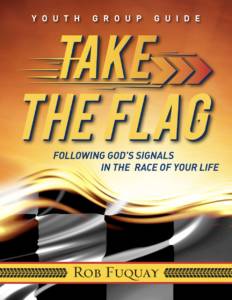 Youth Guide — This pdf is 45 total pages it gives complete sessions plans. Download a copy to plan your youth sessions. Josh is the writer of this guide.
Youth Guide — This pdf is 45 total pages it gives complete sessions plans. Download a copy to plan your youth sessions. Josh is the writer of this guide.
The DVD may be used with youth, but it is very important that the people facilitating small groups with youth preview the content before showing it. The DVD contains adult subject matter that some parents might not want their youth discussing without prior consent. For that reason, we recommend that all leaders view it together to discuss whether they will use it and what youth age groups will be included. Consider inviting parents to be part of that discussion (parents may volunteer to help facilitate). Make a plan to help your pastor, parents, other adults, and church leaders know what you’ll be studying. The content (book, DVD, Youth Group Guide) may be used by themselves or as part of a larger churchwide worship and study series.
Josh Tinley is a high school math teacher who spent ten years as editor of youth curriculum at The United Methodist Publishing House. He is the author of Book of Fidgets; Kneeling in the End Zone: Spiritual Lessons From the World of Sports; Perplexing Scriptures from the Converge Bible Studies series; and numerous curriculum pieces and articles. He received a Masters of Theological Studies from Vanderbilt University. Josh is originally from Indianapolis and currently lives with his wife and three children near Nashville. Follow Josh on twitter @joshtinley.
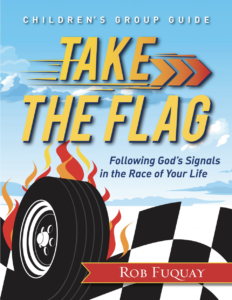 Children’s guide — This pdf is 52 total pages it includes complete session plans (up to page 34) AND 18 activity pages (full color)! Download a copy to plan your children’s sessions. Heather is the writer of this guide.
Children’s guide — This pdf is 52 total pages it includes complete session plans (up to page 34) AND 18 activity pages (full color)! Download a copy to plan your children’s sessions. Heather is the writer of this guide.

Heather Harriss is a United Methodist minister serving in Nashville, Tennessee. She has been part of ministry with children for the last 10 years. In addition to writing the Children’s Group Guide for Take the Flag, Heather wrote the Children’s Group Guide for Rob Fuquay’s The God We Can Know. Heather holds a BA in English from the University of North Carolina at Chapel Hill and a Master of Divinity from Princeton Theological Seminary. Heather lives with her husband and two children in Nashville. As well as writing about the stories of our faith, she loves to read, write, jog, and plant flowers.
Children’s Prayer – Download the 4-color jpg image to use in worship or children’s ministries!
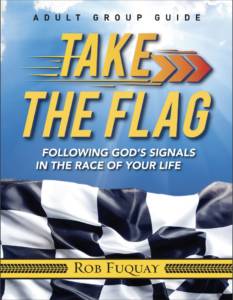 Adult Guide — This pdf is 46 total pages. Download a copy to plan your adult sessions. Susan is the writer of this guide.
Adult Guide — This pdf is 46 total pages. Download a copy to plan your adult sessions. Susan is the writer of this guide.
 Susan Fuquay has been on staff in United Methodist churches for over twenty years leading youth, children, and adult discipleship. She is the creator of Disciple Fast Track. She is passionate about helping people explore Scripture and grow in their faith.
Susan Fuquay has been on staff in United Methodist churches for over twenty years leading youth, children, and adult discipleship. She is the creator of Disciple Fast Track. She is passionate about helping people explore Scripture and grow in their faith.
Intergenerational Ministry Option
by Tanya Eustace Campen
Intergenerational ministry affirms all people’s joint participation in God’s work in and for the transformation of the world.
Why Intergenerational Ministry?
“We must grow up in every way into…Christ, from whom the whole body, joined and knit together by every ligament with which it is equipped, as each part is working properly, promotes the body’s growth in building itself up in love.” (Ephesians 4:15-16 NRSV)
Intergenerational ministry is an intrinsic part of our identity and calling. It is a holistic approach to sharing the good news that affirms how all people–no matter their age–are created, called, and equipped for ministry. God calls people of all ages to show up, live, and work in the world. IG ministry affirms and invites faithful members of the body of Christ to participate in God’s holy work recognizing who God created them to be and claiming what God calls them to do.
Time and time again, scripture reminds us of our identity (who God created us to be) and our call (what God calls us to do). In Genesis we learn that we were created “very good,” and we hear that we have responsibilities and work to do. Through Jesus’ life, death, and resurrection, our identity and call is affirmed, modeled, and proclaimed as we hear Christ’s call to “make disciples of all nations.” We are told to remember that we do not do it alone–Jesus said, “I am with you always.” (Matthew 28:19-20).
First Corinthians 12:12-31 reminds us that the body has many parts, and each part is important. As Christians we affirm that we are one body with many gifts and that all gifts come from God. Each of these gifts is a building block that helps build the kingdom. The book of Ephesians supports this idea, reminding us how the body of Christ is strengthened when all parts are working together. When all of God’s children join together and contribute their gifts, the body grows and builds “itself up in love” (Ephesians 4:15-16). We are strengthened in our ministry when all people use their gifts and participate in God’s work for the transformation of the world. The body of Christ is made stronger when each person is present and is contributing to the work of the kingdom.
Developmental theory also supports the need for intergenerational ministry. Everyone learns and grows in community. While everyone can learn individually, persons often learn quicker or pick up harder skills, when someone else teaches them. When persons of all ages gather, there is space to share, teach, guide, and pass down the stories and practices of our faith. Individuals learn from one another when they are invited into an intergenerational community. This is how the Christian faith continues to be shared. Children and youth bring gifts that teach, shape, and form adults; adults bring gifts that can teach and nurture children and youth.
Why is intergenerational ministry important? Because it reflects who we are and what we are called to do. God creates, calls, and equips all people for work in the kingdom. Intergenerational ministry is the church’s faithful response to God’s call for all people to participate in the transformation of the world. This is what it means to be alive–using the gifts God has given each persons to offer hope to a hurting world and to make disciples of Christ for the transformation of the world.
Download a 20 page PDF of the Intergenerational Group Guide.
Starting Small Groups – If you are new to planning small groups, read this article written by Craig Mitchell, a regular contributor to devozine.
Facilitating Small Group Sharing – Another helpful article written by Craig.
Planning
Tools to promote the series inside your church and out in your community!
Watch the promotional video!
Share the 2-minute promotional video with your small group or class to help introduce the series as you begin planning.
Listen in as Rob discusses the spiritual parallels between Christianity and auto racing. He also shares how his church used the content for a churchwide series during Lent on the Charisma Podcast Network (20 minutes).
If you like one and want to use it right click on it to download and use.
Flyer—download a 4-color pdf for promoting your series (8.5 x 11)
Postcard—download a 4-color (one-sided) postcard, use it to invite people to the series. (size 5.5 X 8.5)
If you print these on card stock you should be able to mail them for $ .47 a piece. We recommend you check with your local postmaster.
Email header–a 4-color jpg for use on church or group e-emails.
Church Promotional Copy–on this pdf you’ll find short announcements.
Take the Flag logo— white background TAKE THE FLAG in yellow with orange and red arrows
Take the Flag Run to Win black background with verse in white (686 x 273) jpg
Help with planning for each week of your churchwide series use these to tailor the content for your setting.
Sermon Starters–read some helpful instructions to get you started. Then download the 15 page Word document written by Upper Room Ministries colleagues. We appreciate Rev. Jackson Henry who worked on the music selections for each week.
Worship Countdown–a short 2-minute video (mp4) to use in worship each week to get people settled and ready to go!
Worship Guide/Bulletin Cover–-download a 4-color image on white (8.5 x 11)
Children’s Prayer–download the 4-color jpg to use in worship or children’s ministries!
Use on your individual or church social media (we will be using the hashtag #taketheflag).
Facebook 1 — sky, checkered flag, #taketheflag in black with red arrows
Facebook 2 — sky, checkered flag, #taketheflag in yellow with orange and red arrows
Facebook 3 — shows the sky and the checkered flag
Twitter 1 — sky, checkered flag, #taketheflag in black with red arrows
Twitter 2 — sky, checkered flag, #taketheflag in yellow with orange and red arrows
Twitter 3 — shows the sky and the checkered flag
Short invitations from some of our testimony people and Rob to generate enthusiasm for your series!
Rob at the North Carolina Hall of Fame: https://youtu.be/LssCkC7_ZEI
Larry McReynolds: https://youtu.be/NNGCSdkGHdM
Scott Dixon: https://youtu.be/LILlBqawBPw
Michael McDowell: https://youtu.be/2f1vBrM0j68
Go and Do
Go and Do
Go and Do is a list of ideas to help your church or small group consider ways to serve during your study of Take the Flag. This list highlights ways people featured on the DVD serve their communities. Like them, we hope you’ll be intentional about ways you can serve in your community now and after your study ends!
James Hinchcliffe
Methodist Health Foundation is the steward of charitable support for IU Health Methodist Hospital, IU Health University Hospital and IU Health Simon Cancer Center, improving the health of our patients and community through innovation and excellence in care, education, research and service. With a rich history of delivering critical care and highly specialized and effective treatments, IU Health supports critically ill and injured patients when they need it most. James is featured in session four of the DVD.
Nick Terry
Nick is featured on session six of the DVD. He competed and finished his first full Ironman in October 2016 with proceeds going to Pit Stops for Hope which is “a collaboration of the racing community united together for the betterment of Americas youth. We believe positive change will come to our community by investing in our children. Pit Stops for Hope plans to invest in our youth by primarily assisting food banks and academic instructors. Food and education work hand and hand in producing success. Our mission is to replace poverty with hope in our community!”
Sam Hornish Jr.
Sam and Crystal have set up a foundation to provide support to groups that work to impact the lives of children and youth who are on the margins and often invisible. Here are some of the organizations they support:
- Feed the Children http://www.feedthechildren.org/about/
- Samaritan’s Purse https://www.samaritanspurse.org/our-ministry/about-us/
- D.A.R.E. https://www.dare.org/
- Special Olympics http://www.specialolympics.org/
- Covenant House https://www.covenanthouse.org/about-homeless-charity
North Carolina Auto Racing Hall of Fame
Rob mentioned on the promotional video that some of the proceeds go to SCAN (Stop Child Abuse Now) which provides more than 20 different services or programs to prevent and treat child abuse in several counties (North Carolina). Last year, SCAN provided services to 3,359 people in 60 cities/towns in 14 counties. The majority of services are free to the community. Volunteers are used extensively for their ability to give individualized care and to involve the community in the prevention of child abuse.



